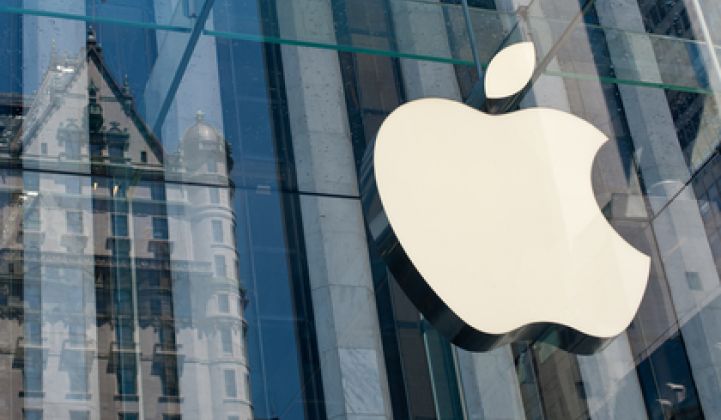Smartphones with large screens have been popular in China and Japan for several years, but it took Apple’s iPhone 6/6+ release last September for the rest of the world to adopt them. Now, it is common to see “phablets” in the hands of commuters everywhere, not only on the subways of Shanghai or Tokyo.
Will a similar trend unfold in commercial solar?
Commercial solar power has been profitable in a number of regions for quite a while, but it represents the smallest application when compared to residential and utility-scale solar systems. In the U.S., the commercial & industrial (C&I) solar power segment has been more or less stagnant for about three years. In fact, last year’s new additions were even lower than in 2012.
Can First Solar’s recent solar deal with Apple propel the commercial market into a new dimension? Yes, I strongly believe it can.
When we announced in February that Apple will buy clean energy from First Solar’s California Flats project in Monterey County, the media echo was gigantic. Sure, it was about Apple. But there was more to this story. The announcement demonstrated how a large corporation can supply 100 percent of its operations with renewable energy.
And it was also because of the sheer size of the deal: the $848 million, 25-year power-purchase agreement (PPA) from our 130-megawatt solar plant -- which we will construct from the middle of this year until the end of 2016 -- is the largest solar power supply contract signed by a commercial end user as of today. This project alone represents around 13 percent of the entire C&I capacity installed last year in the U.S.
But why has the C&I segment been slow to grow? There are several financial reasons. A few years ago, solar was still not cost-competitive enough in comparison to conventional sources to be an attractive option for commercial and industrial customers. Then came the financial crisis. Companies had to manage much bigger problems than how to add renewables to their power procurement strategy.
When companies were fighting for survival, it was not the time to sign new long-term solar PPAs. Balance sheets did not justify such investments, and banks would have not approved loans for solar procurement.
Aside from these external factors, the solar sector also could have made a strategic mistake by focusing on on-premises solar installations for C&I customers. These installations usually reside on rooftops, and industrial rooftops are often not designed to bear the weight of solar arrays. And in many cases, corporations rent their office or manufacturing space, and thus have little ability to modify the structures.
Moreover, typical office roofs are usually too small to host a solar system that can generate the entire power needs for the building. It doesn’t sound very impressive to say that your rooftop solar installation helps you offset only a small percentage of what your company actually consumes. Large-scale solar installations, located off-premises, provide some clear advantages over commercial rooftop solar.
For example, First Solar’s ground-mounted California Flats power plant, with a total capacity of 280 megawatts, covers 2,900 acres of land. Electricity generated by the power plant will be shared between Apple and California utility Pacific Gas & Electric. Such huge utility-scale solar power plants have a much better cost structure than typical on-site C&I systems and are better able to fully satisfy the appetite for green power of many big corporations.
Apple had two main reasons to partner with First Solar. It had promised its shareholders and customers to “power all corporate offices, retail stores, and data centers entirely with energy from renewable sources,” following the belief that “an energy-efficient facility is good but a 100 percent renewable energy facility is better.”
After reaching 30 percent in 2010 and 94 percent in 2013, the addition of electricity from California Flats will bring Apple to 100 percent. The California Flats PPA provides for a long-term, low-cost power supply that Apple can use to hedge against fuel price volatility, provided by a reliable and experienced solar industry leader.
That’s why Apple CEO Tim Cook emphasized, when signing the power supply deal with us: “We expect to have very significant savings, because we have a fixed price for renewable energy, and there is quite a difference between that price and the price of brown energy.”
I am convinced that wholesale C&I is key to the success of the entire C&I solar segment. There are so many large corporations in the technology space, manufacturing and mining -- as well as governmental institutions -- that have to move their operations toward more sustainable, greener practices, as they are being closely watched and pressured by media, consumers and voters. And at the same time, these entities are looking for electricity that is as low-cost as possible.
Hopefully, the Apple Factor will affect the C&I solar market in the same way it has affected the smartphone market.
***
Marc van Gerven is the vice president of global marketing at First Solar. This piece was originally published at First Solar's Current blog and was reprinted with permission.



